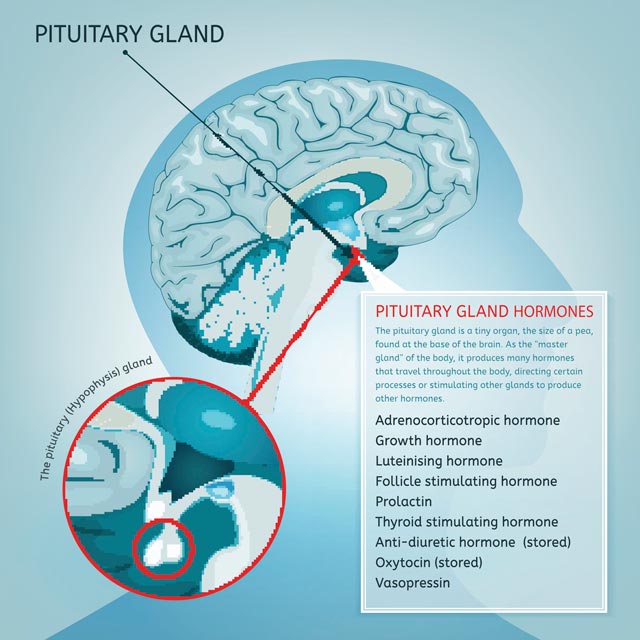How Does Cushing Disease Cause Hair Loss?

Cushing syndrome is considered an adrenal hormone disorder. Its symptoms are caused by chronic excessive levels of hormones (cortisol and androgens) in the body. Affecting mainly adults between the ages of 20 and 50, risk factors for the syndrome include diabetes and obesity. 32, 108, 109
Although both men and women can develop Cushing syndrome, overt physical symptoms are more prevalent in women. Overall the condition is seen more often in women than in men, since most cases are caused by Cushing disease (which is about five times more prevalent in females). 32, 108, 109
Symptoms of Cushing syndrome include: 108, 110, 380, 381
- Abdominal (pink, purple, or red) stretch marks
- Acne
- Bruising (mostly on arms and legs)
- Buffalo hump—a fatty hump on the lower back of the neck
- Edema (legs swollen from fluid retention)
- Excess facial hair and other signs of masculinization in women
- Glucose intolerance and diabetes
- Hypertension
- Kidney stones
- Male pattern balding in women
- Mental disturbances and mood changes (such as hyperactivity and anger)
- Menstrual problems
- Moon facies (swollen, rounded face)
- Muscle weakness and wasting (typically found more with older age)
- Osteoporosis
- Poor wound healing
- Redistribution of fat from the lower body to the torso
- Ruddy face
- Suppressed immune system
- Thinning skin
- Weight gain (more prevalent with younger age)
Most cases of Cushing syndrome are caused by Cushing disease—when a non-cancerous tumor in the pituitary gland produces too much adrenocorticotropin hormone (ACTH). In turn this stimulates the adrenal glands to secrete excess hormones. 109, 110
Other conditions that lead to 30% of Cushing syndrome cases include: 109, 110
NON-CUSHING DISEASE CAUSES OF CUSHING SYNDROME |
|
|---|---|
| ADRENAL GLAND TUMORS |
|
| ECTOPIC ACTH SYNDROME |
|
| GLUCOCORTICOID STEROID MEDICATIONS |
|

